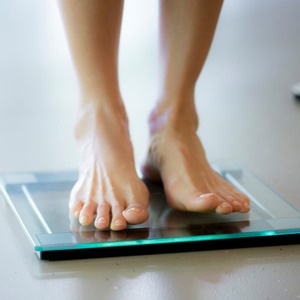
A healthy weight is important for many reasons and can help prevent many chronic diseases. But how exactly do we determine what’s “healthy”?
The body mass index (BMI) is calculated by dividing weight in kilograms by height in metres squared, and has been used as a yardstick for obesity for several decades.
The number determines the following:
- BMI between 18 and 25: Normal weight
- BMI between 25 and 30: Overweight
- BMI greater than 30: Obese
But a new study published in the European Heart Journal revealed that BMI may no longer be the golden rule when it comes to determining a healthy weight, but that "regional fat" (where fat is distributed in the body) should rather be looked at.
Risk tied to body shape, not BMI
According to this research, led by Qibin QI, an associated professor at the Albert Einstein College of Medicine in New York, good health is not necessarily determined by your BMI, but more by fat distribution – in other words, where your body fat is located.
The study looked at the body mass and fat distribution of more than 2 600 postmenopausal women. These women were all recruited for the study between 1993 and 1998 and their health was monitored until early 2017.
During that time, 300 of the women developed cardiovascular disease – all women with considerably higher percentages of fat around the middle instead of the legs.
The women with the highest percentage of fat around their legs and thighs had about a 40% lower risk for cardiovascular disease. The study also found that the BMIs of those women had very little to do with their risk of developing cardiovascular disease.
Since the study only followed postmenopausal women, researchers now want to see the results of a wider study sample.
Why BMI can break your morale
When Jess* from Cape Town went to her doctor for an annual check-up, she was fitter than she had ever been and running five times a week while training for a half marathon. At 1.69 metres and weighing just around 70kg, her doctor tutted: “You look good, but according to the BMI, you are just on the cusp of being overweight, so you might want to consider losing some weight. We just need to get the numbers right. Otherwise, the circumference of your waist is healthy.” Everything else, including glucose and cholesterol levels was also good.
Jess* was stunned that her usually open minded doctor focused so much on her BMI and not at the composition of her body fat and muscle ratio.
“At that stage, I had my body fat measured by my personal trainer – it was 22%, which is not overly high. But from that day, I couldn’t stop obsessing about the number on the scale. Whenever my weight shifted more towards 70kg, I immediately told myself “overweight”.
Some incentivised health programmes still use the BMI scale to determine a healthy weight, but your waist-to-hip ratio and body fat percentage are acknowledged as a way to gauge your ideal weight.
BMI 'flawed'
This recent study is not the first to help determine the accuracy of BMI. Doubts have been cast on BMI for a while, as it fails to measure overall fat and muscle content.
In the meantime, other solutions have been offered to gauge a healthy weight, but BMI is still used by medical professionals as a guide.
In April 2012 a study published in PLoS One (as reported in Time) documented several inconsistencies and questioned the accuracy of BMI. A study involving 1 400 men and women was used.
The study found that about half of the women who couldn’t be categorised as obese according to their BMI had an abnormally high percentage of body fat.
A quarter of the men also missed the obese level on the BMI, but were obese in terms of their body fat. On the other side of the spectrum, a quarter of the study participants who were classified as obese by the BMI were not obese when their body fat percentages were measured.
In 2018, scientists wanted to do away with the BMI, and instead proposed the relative fat mass index (RFM). This was published in the journal Scientific Reports.
In this case, the distance around your waist is measured in relation to your height.
"We wanted to identify a more reliable, simple and inexpensive method to assess body fat percentage without using sophisticated equipment," said lead researcher Orison Woolcott, from the Cedars-Sinai Medical Center in California.
But researchers found that this system is also limited – it doesn’t take gender and age into account, and therefore the RFM may be a bit skewed in some cases. However, more and more researchers are pushing for ways other than BMI to gauge your weight and health.
How to determine your healthy weight
With so many ways to determine your health, as well as confusion around BMI, it’s important to realise that your body composition is unique. If you're concerned about your weight and health, your best alternative would be to consult your doctor or a dietitian for a personalised health assessment.
Image credit: iStock




 Publications
Publications
 Partners
Partners










